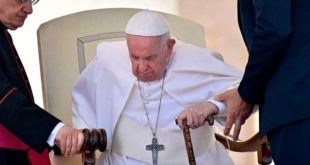A crucial component of the rhythmic family of musical instruments is the drum. Drums are often battered with the hand, one or two sticks with or without padding, or both. Different sticks can be used, depending on the type of drum and the desired sound. They could be brushes, wooden sticks, or even sticks with a plush felt beater at the end.
They seem like instruments that are just employed for music, and eventually for amusement and bringing about enjoyment, on the surface. However, drums have other uses, particularly in African culture and rituals. When compared to western music, the metaphorical meaning of African drums is more profound and singular.
They are utilized to honor communal traditions and ceremonial events. Additionally, they serve as tourist attractions in a number of African nations, promoting and showcasing African history and culture.

Djembe or Talking Drum
The talking drum was first used for rites of passage, ancestral worship, rituals, and social dances as early as 500 A.D. in major communities. The Bambara people of Mali claim that the name of the djembe is derived from the proverb “Anke djé, anke bé,” which means “everyone gets together in peace” and describes the function of the drum. The Bambara word “djé” means “gather,” and the word “bé” means “peace”.

Gbedu
Gbedu, which translates to “big drum,” is an instrument that has historically been employed in Nigerian and Beninese ceremonial Yoruba music. The Gbedu drum is typically utilized on official occasions or in Ogboni ceremonies, the illustrious Yoruba secret society. The Dundun/Gangan or talking drum, the Batá drum, and the Sakara drum are the other three families of Yoruba drums. The Gbedu, also known as Ogido, is one of these families. Drums of various sizes make up each family, with the mother drum (iya ilu) taking the lead role and the other drums providing support. The Gbedu drum is a symbol of grandeur among the Yoruba. The Oba may dance to the beat of the drum during events like the rite of Isagun. If anyone else made use of the drum for sedition, they were taken into custody.

Entenga
In the royal courts of the “kabaka,” the traditional monarch of Buganda in Uganda, East Africa, the “entenga” drum is frequently heard. Droughts, prayers, and the exorcism of bad spirits from communities are all traditional African religious practices that have been accompanied by the beat of drums. African drums serve to bind and hold together social and political gatherings such as marriages, funerals, weddings, naming rituals, and sorrowful and happy occasions.

Karyenda
The Karyenda, which originates from Burundi, once served as the nation’s primary emblem. It had semi-divine status and represented the Mwami (King of Burundi). It is thought that the Mwami could translate the karyenda’s beatings into laws for the realm. These drums were sacred and were typically utilized in rituals and important occasions for the king, such as royal coronations. Weddings were often proclaimed by the drums, and they were also utilized at funerals. The sound of the drums also served as a signal for other ritual events, such as the mwami’s rise and fall. The Hutu households, who were the only ones the king permitted to make the drums, generally guarded these drums in drum sanctuaries.

Ngoma
Certain Bantu groups in Africa utilize Ngoma Ngoma, also known as engoma, ng’oma, or ingoma. The name Ngoma is derived from the Kongo word for “drum.” In ceremonies held in Central and South Africa, the usage of these drums is primarily intended to promote healing. Regular music and dance are a part of the rituals, which can reduce stress and promote prosocial behavior. Ngoma typically acts as a way to bring the tribe together and support major life or health transitions. Zimbabwe also uses the Ngoma drum, primarily for festivities and traditional dances.
The use of drums has increased significantly across the African continent over the past fifty years, to the point where common people are now making their own drums out of love rather than investing a lot of money. Numerous popular African musical genres have included African drum rhythms, empowering music and performance in Africa today and providing a lesson to be learned.

The significance of African drums cannot be adequately conveyed in a single conversation, but if you take the time to experience it, learn it, and be passionate about this art, you will come to grasp its significance on a spiritual level.
There are countless additional varieties of drums with deep roots in African culture and tradition, each with a unique sound and significance in people’s lives. They inspire something inside the body as they touch the soul and awaken the spirit, from delivering messages to the town’s residents to healing the ill. The drum binds the continent’s inhabitants by tying their hearts together in time with the drumming melodies, which is why it is known as Africa’s heartbeat.
Source: face2faceafrica.com
 Home Of Ghana News Ghana News, Entertainment And More
Home Of Ghana News Ghana News, Entertainment And More




